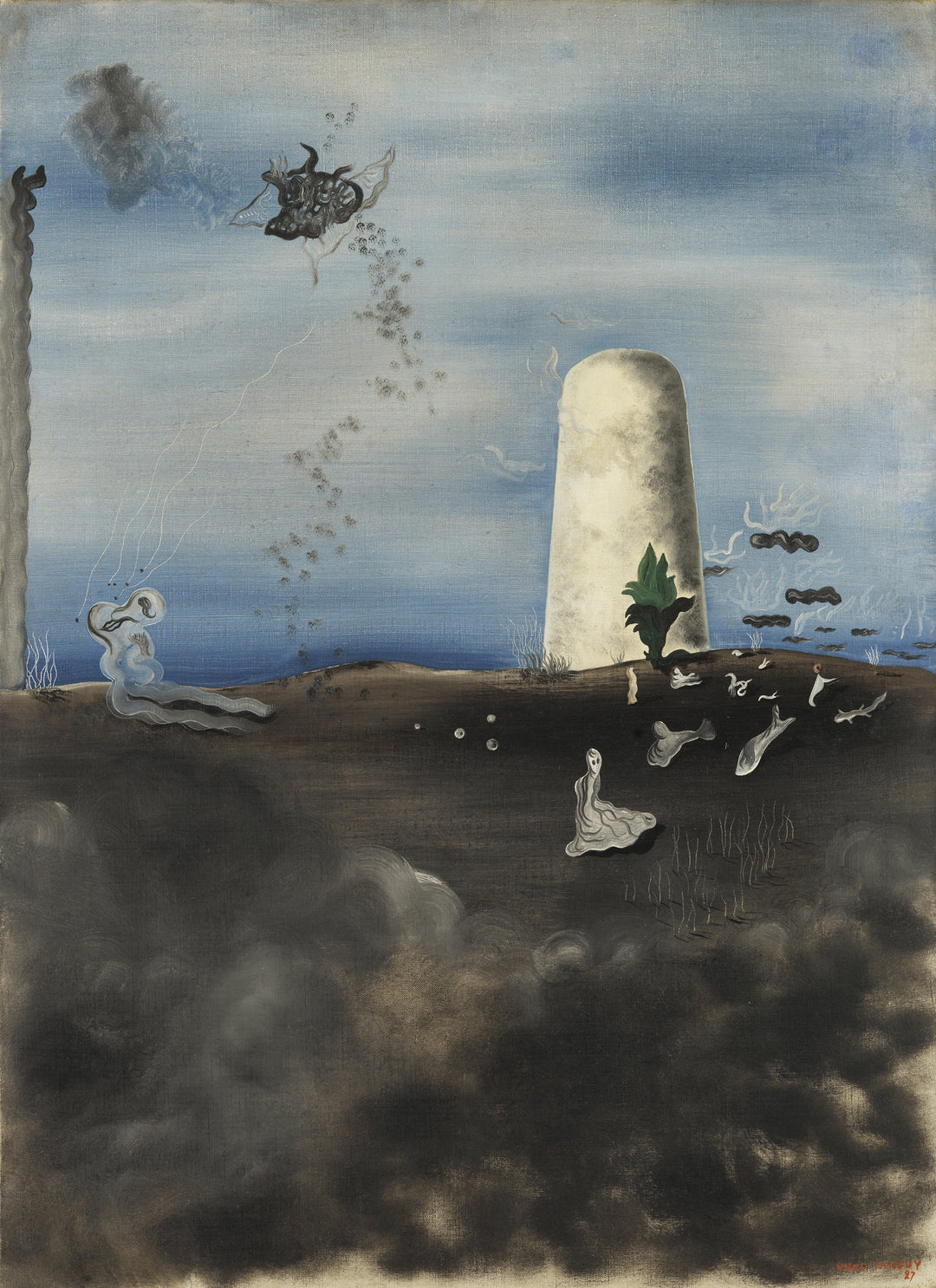
Death Stalking His Family - Yves Tanguy
| Author: | Yves Tanguy |
|---|---|
| Title: | Death Watching His Family |
| Original location: | Thyssen-Bornemisza Museum, Madrid, Spain |
| Year: | 1927 |
In 1927, Yves Tanguy created "Death Lurking Over His Family," a work in which surrealist abstraction becomes a stage for silent menace. From his studio at 23 Rue du Moulin Vert in Paris, Tanguy conceived this canvas as an exploration of the fragility of existence, projecting onto the landscape the idea of death as an inescapable presence. Amorphous figures emerge in a desert-like environment, trapped between stillness and dissolution, evoking structures on the verge of collapse or beings halted at the threshold of their disappearance.
The palette of desaturated tones and subtly blurred shadows reinforces the sense of a world in transition, where objects seem to be half-formed or in the process of dissolving. The biomorphic figures, characteristic of Tanguy's style, suggest bodies without a fixed identity—perhaps fragments of family memories distorted by the passage of time, related to the early death of his father in 1908 at the age of 56, when Yves was only 8. Like many of his works, this landscape is not merely physical, but a metaphor for the human psyche, where death not only lurks but becomes part of the very composition of the universe.
Surrealism, the movement to which this painting belongs, was born after Dadaism, but while Dadaism celebrated rupture and absurdity, the Surrealists sought the deepest landscapes of the unconscious. Tanguy, unlike Dalí or Magritte, avoided clear figurative representations, choosing instead to transform his visions into ambiguous territories that eluded any narrative categorization. In "Death Lurking Over His Family," the absence of a concrete point of reference turns the scene into an interpretive abyss, where the viewer must find their own meaning.
Tanguy's influence would extend beyond surrealism, anticipating the abstraction of artists like Rothko and Matta, who explored the dissolution of space in their own compositions. The sense of infinity in his landscapes would also resonate in the aesthetics of abstract expressionism, where depth and emptiness became central elements of visual experience.
Painted nearly a century ago, Death Lurking Over His Family remains a haunting and timeless work. There is no single answer on its surface, only the echo of multiplying questions: is death an end or a transition? Are we its victims or part of its structure? Like a dream from which we never awaken, Tanguy leaves us suspended in a space where certainty has dissolved and the presence of the inevitable becomes the only truth.